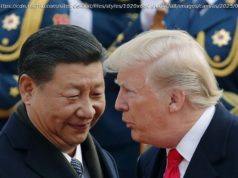The Hong Kong budget earmarked HK$20 billion for the Hong Kong Shenzhen Innovation and Technology park. And that’s just for starters. But this poses the question of why Hong Kong should pay for it when Shenzhen will be the principal beneficiary
Of the HK$50 billion budgeted [for innovation], HK$20 billion will be earmarked for the first phase of the Hong Kong Shenzhen Innovation and Technology Park in the Lok Ma Chau Loop, for infrastructure and initial operation and start-up costs.
Let’s put some things in perspective here. That HK$50 billion that our financial secretary so casually tossed out for innovation is the equivalent of HK$20,000 for each and every household in Hong Kong and the HK$20 billion for the Lok Ma Chau Loop comes in at HK$7,800 per household.
If you held that HK$20,000 in your own hands right now would you willingly give it away to him for hi-tech pie in the sky or might you have some better uses for the money? Yes, I thought so, an answer as unanimous as is routinely given by the geriatric chorus of the National People’s Congress.
And let’s also think a little more about what is happening at the Lok Ma Chau Loop, an 87-hectare piece of land that used to be part of Shenzhen but was put under Hong Kong jurisdiction in 1997 when the Shenzhen River was straightened. The plans call for a development of 1.2 million square metres of floor area at this innovation “hub”. This makes it four times the size of the Science Park. Our government has established a new paradigm for throwing good money after bad. Don’t just pour in as much as you have already lost. Quadruple it.
Hong Kong Science Park to take the lead on driving innovation and technology
You might also have thought that they would first try to fill up Cyberport with more than sales agencies masquerading as tech studios. It’s still Cyberia, the place is so empty.
Note that the HK$20 billion for the Lok Ma Chau Loop is just for starters. There are reasons for this.
The first problem is a million cubic metres of toxic mud at the site. This cannot just be dumped into the ocean. Hong Kong is a signatory to a London Convention that prohibits doing such things.
I concede, however, that the problem is easily solved. Just tell everyone that the problem is not really so bad. Repeat after me: “The problem is not so bad”. There we go, problem solved.
Yet again, no coherent fiscal policy in Hong Kong’s budget
Of course, there are still some other problems. There are no road, water, sewage or power connections. All of these must go in first. No one had earlier thought they would ever be needed. The place is just too remote. This leaves you with the obvious question of why anyone in Hong Kong should want to commute the long distance to such a remote place of work. How do you attract top talent that way?
There is a simple answer. The talent is not meant to come from Hong Kong but from Shenzhen, right next door. This is billed as a joint development with Shenzhen and part of the deal is that the immigration authorities will provide a special channel for Shenzhen commuters.
But this then poses the question of why Hong Kong should pay for it if Shenzhen is to be the principal beneficiary. Good question. You expected an answer?
Continuing in this story of murkiness, the joint development documents state that the Hong Kong government “possesses” the land but say nothing about how it came to do so and at what price. All we know is that we are responsible for “settling any land ownership problems or claims” arising before the land was transferred to Hong Kong. In the interests of making it clear that all was above board in this transaction I think the Shenzhen city fathers should now declare that they did not first buy this land in their private capacities, hoping to make a lot of money on the transfer.
Such a declaration could only improve our relations with them in clarifying that, while we are building this park for their benefit, we are not additionally paying them to build it for them.
Or are we?






